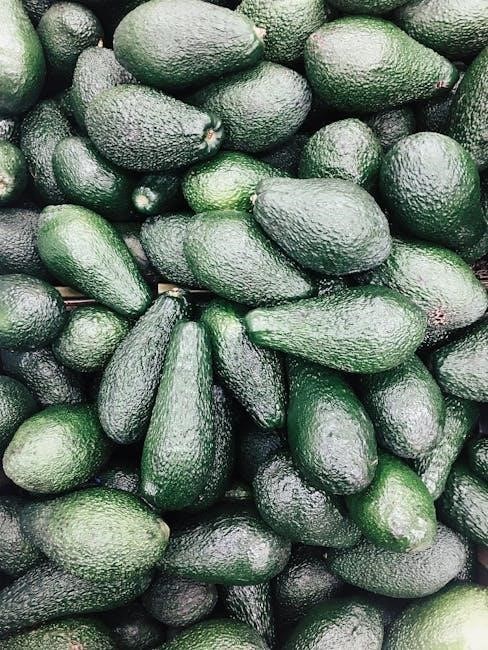Hill’s Prescription Diet i/d Low Fat Feeding Guide
Hill’s Prescription Diet i/d Low Fat is clinically formulated by nutritionists and veterinarians to support your dog’s digestive health. Always consult with your veterinarian for specific feeding instructions tailored to your pet’s individual needs. Remember that daily feeding recommendations are merely a guide‚ serving as a starting point for determining the appropriate amount.
What is Hill’s Prescription Diet i/d Low Fat?
Hill’s Prescription Diet i/d Low Fat is a specialized veterinary diet meticulously crafted to support the digestive health of dogs facing fat-responsive conditions. This formula is designed with highly digestible proteins and a low-fat content to ease the burden on a compromised digestive system. It’s often recommended for dogs experiencing issues like pancreatitis‚ hyperlipidemia‚ or other conditions where fat digestion and absorption are impaired.

The diet aims to minimize digestive upset while providing essential nutrients for overall health and well-being. By reducing the fat content‚ i/d Low Fat helps to alleviate symptoms such as vomiting‚ diarrhea‚ and abdominal discomfort. It’s formulated to be palatable‚ encouraging dogs to eat and maintain their nutritional intake during periods of digestive distress. This specific formulation is designed to actively promote healthy digestion‚ ensuring that your dog receives optimal nutrition while supporting their gastrointestinal system.
Furthermore‚ Hill’s Prescription Diet i/d Low Fat is available in various forms‚ including dry kibble‚ wet food‚ and even stew options‚ to cater to different preferences and needs. This allows for flexibility in feeding and ensures that even dogs with finicky appetites can benefit from this therapeutic diet. Always consult with your veterinarian to determine if Hill’s Prescription Diet i/d Low Fat is the right choice for your dog’s specific condition and to receive personalized feeding recommendations.
Key Ingredients and Nutritional Information
Hill’s Prescription Diet i/d Low Fat is formulated with a carefully selected blend of ingredients to promote optimal digestive health. Key components often include highly digestible protein sources‚ such as chicken or egg‚ which are gentle on the gastrointestinal tract and easily absorbed. The diet also incorporates prebiotic fiber‚ which supports the growth of beneficial gut bacteria‚ contributing to a balanced and healthy digestive system.
Nutritionally‚ i/d Low Fat is designed to be low in fat while providing essential nutrients. It typically contains a moderate amount of carbohydrates for energy‚ along with vitamins and minerals to support overall health. The specific levels of crude protein‚ crude fat‚ crude fiber‚ and moisture are carefully controlled to meet the unique dietary needs of dogs with fat-sensitive digestive issues. Furthermore‚ the diet often includes omega-3 fatty acids‚ such as EPA and DHA‚ which have anti-inflammatory properties and can further support digestive health.
It’s important to note that the exact ingredient list and nutritional composition may vary slightly depending on the specific product form (dry‚ wet‚ or stew). Always refer to the product label for the most accurate information. Hill’s emphasizes that animal feeding tests substantiate that their i/d Low Fat formulas provide complete and balanced nutrition for dogs‚ ensuring they receive all the necessary nutrients while managing their digestive health.
Indications for Use: When is i/d Low Fat Recommended?
Hill’s Prescription Diet i/d Low Fat is specifically formulated for dogs with digestive sensitivities and conditions that benefit from a reduced fat intake. It is often recommended by veterinarians for managing various gastrointestinal issues‚ including pancreatitis‚ a condition characterized by inflammation of the pancreas. Dogs with exocrine pancreatic insufficiency (EPI)‚ which impairs the digestion of fats‚ may also benefit from this diet.
Furthermore‚ i/d Low Fat is frequently used for dogs experiencing general digestive upset‚ such as vomiting‚ diarrhea‚ or loss of appetite. These symptoms can be caused by a variety of factors‚ including food intolerances‚ infections‚ or inflammatory bowel disease (IBD). The low-fat formulation is easier to digest and helps reduce the workload on the digestive system‚ allowing it to recover more effectively.
In addition‚ i/d Low Fat may be recommended for dogs with hyperlipidemia‚ a condition characterized by elevated levels of fat in the blood. Inappropriate fat levels can affect a dog’s digestive health‚ making this diet a suitable option. It’s crucial to consult with a veterinarian to determine if i/d Low Fat is the appropriate dietary choice for your dog’s specific condition and to rule out any underlying health issues. They can provide a proper diagnosis and recommend the best course of treatment.

Feeding Guide: Daily Recommendations
Determining the appropriate daily feeding amount of Hill’s Prescription Diet i/d Low Fat for your dog is crucial for their health and well-being. Remember that the provided feeding recommendations are merely a starting point and may need adjustments based on your dog’s individual needs‚ activity level‚ and overall health condition. It’s always best to consult with your veterinarian for personalized guidance.
When using the feeding guide‚ consider your dog’s weight as the primary factor. The guide will typically provide a range of daily amounts‚ usually expressed in cups or grams. Grams offer a more precise measurement. Divide the total daily amount into multiple meals throughout the day‚ rather than feeding one large meal. This helps prevent digestive upset and ensures a more consistent nutrient intake.
Monitor your dog’s body condition regularly. If they are gaining weight‚ reduce the daily feeding amount. Conversely‚ if they are losing weight or seem hungry‚ increase the amount accordingly. Remember that factors such as age‚ breed‚ and metabolism can also influence their dietary needs. Pay close attention to your dog’s stool quality as well. Consistent‚ well-formed stools are a good indication of proper digestion. Your vet can help you fine-tune the feeding plan to achieve optimal weight and digestive health.
Transitioning to i/d Low Fat
A gradual transition to Hill’s Prescription Diet i/d Low Fat is essential to minimize digestive upset in your dog. Abruptly changing your dog’s food can lead to vomiting‚ diarrhea‚ or a decreased appetite. A slow and steady approach allows their digestive system to adapt to the new food‚ ensuring a smoother transition.
Start by mixing a small amount of i/d Low Fat with your dog’s current food. A good starting point is around 25% i/d Low Fat and 75% of their old food. Over the next 5-7 days‚ gradually increase the proportion of i/d Low Fat while decreasing the amount of the old food. For example‚ on day 2‚ you might feed 50% of each‚ and by day 4‚ you could be at 75% i/d Low Fat and 25% old food. By day 7‚ your dog should be fully transitioned to the new diet.
Monitor your dog’s stool consistency and appetite during the transition. If you notice any signs of digestive upset‚ such as loose stools or vomiting‚ slow down the transition process. If the problems persist‚ consult with your veterinarian. Some dogs with sensitive stomachs may require an even slower transition‚ taking up to 10-14 days to fully switch over to i/d Low Fat.
Adjusting Feeding Amounts for Optimal Weight
Maintaining an optimal weight is crucial for your dog’s overall health and well-being‚ especially when managing digestive issues with Hill’s Prescription Diet i/d Low Fat. The recommended daily feeding amounts on the packaging are just a guide and need to be adjusted based on your dog’s individual metabolism‚ activity level‚ and body condition.

Regularly monitor your dog’s weight and body condition. You should be able to feel their ribs easily without a thick layer of fat. If your dog is gaining weight‚ reduce the daily food amount gradually‚ by about 10-15% each time‚ until they start to lose weight or maintain a healthy weight. Conversely‚ if your dog is losing weight‚ increase the daily food amount by a similar percentage.
Consider your dog’s activity level when determining their optimal food intake. Active dogs will naturally require more calories than sedentary dogs. Puppies‚ with their higher metabolic rate and growth needs‚ will also require different feeding amounts than adult dogs. Remember to consult with your veterinarian for personalized recommendations‚ as they can assess your dog’s specific needs and provide tailored guidance for weight management while using i/d Low Fat.
Available Forms: Dry‚ Wet‚ and Stew
Hill’s Prescription Diet i/d Low Fat is available in various forms to cater to different preferences and needs. The dry food option offers convenience and can help promote dental health through its kibble texture. It’s a great choice for everyday feeding and can be easily measured for accurate portion control.
The wet food‚ often in pate or original flavor‚ provides increased moisture content‚ which can be beneficial for dogs with certain health conditions or those who prefer a softer texture. It’s also highly palatable‚ encouraging dogs with reduced appetites to eat. The stew form‚ typically a rice‚ vegetable‚ and chicken combination‚ offers a different texture and flavor profile that some dogs find more appealing. It can be a good option for picky eaters or those who enjoy variety in their diet.
Each form of i/d Low Fat provides the same essential nutrients and digestive support‚ allowing you to choose the option that best suits your dog’s individual preferences and needs. You can even combine different forms‚ such as using dry food for the majority of meals and supplementing with wet food for added palatability or hydration. Always consult with your veterinarian to determine the most appropriate form and feeding schedule for your dog.
Where to Buy Hill’s Prescription Diet i/d Low Fat
Hill’s Prescription Diet i/d Low Fat is widely available through various channels‚ ensuring convenient access for pet owners. Veterinary clinics are a primary source‚ as they often stock prescription diets and can provide expert guidance on appropriate use. Purchasing through your vet ensures the product is suitable for your pet’s specific needs and allows for ongoing monitoring of their condition.
Online retailers‚ such as Chewy.com‚ Petflow.com‚ and Amazon.com‚ offer a convenient way to purchase i/d Low Fat‚ often with free shipping on qualifying orders. These online platforms typically provide a wide selection of sizes and flavors‚ along with customer reviews and detailed product information. However‚ it’s crucial to ensure you’re purchasing from a reputable source to guarantee product authenticity and quality.

Some brick-and-mortar pet stores may also carry Hill’s Prescription Diet i/d Low Fat‚ although availability can vary. Calling ahead to check inventory is recommended. When purchasing from any source‚ always verify that the product is properly sealed and has not expired. Remember that Hill’s Prescription Diet i/d Low Fat requires a prescription from your veterinarian‚ so you’ll typically need to provide proof of prescription when purchasing from any retailer.
